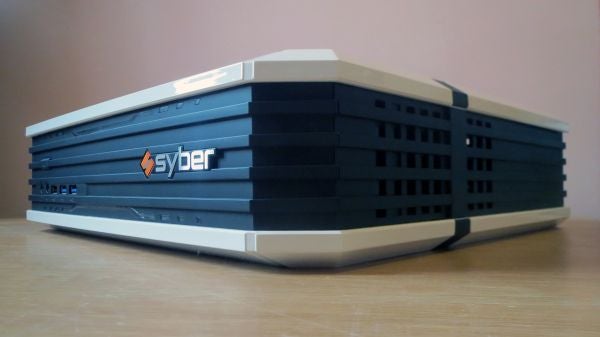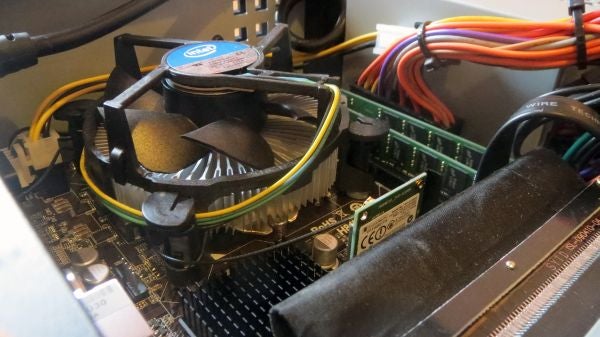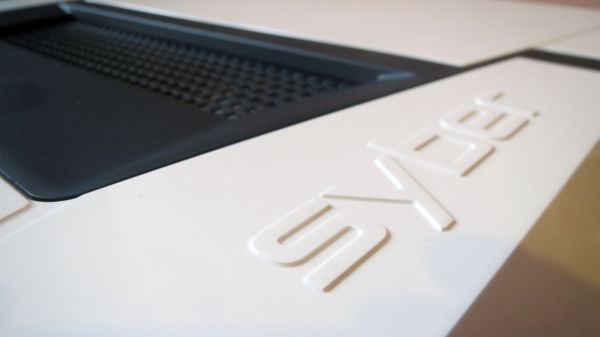Syber Vapor I Review - Performance, Heat, Noise & Power Review
Performance, Heat, Noise & Power
A gaming PC that's taken aim at consoles and living rooms

Sections
- Page 1 Syber Vapor I Review
- Page 2 Performance, Heat, Noise & Power Review
- Page 3 Specification Options & Verdict Review
Syber Vapor I – Performance
Our test unit was the mid-range Vapor, which is designed for 1080p gaming. It’s powered by Nvidia’s GeForce 750 Ti, the first card to deploy the fast, efficient Maxwell architecture. Syber has deployed an MSI-made model that’s been given a boost through overclocking: its 1020MHz stock and 1085MHzMHz boost clocks have been improved to 1059MHz and 1137MHz respectively.
Our games benchmarks demonstrate its Full HD abilities. In Battlefield 4 the Syber averaged a cool 30fps, and in BioShock that result jumped to 48fps. In Crysis 3 the 750 Ti topped out at 29fps, and in Batman: Arkham Asylum the Syber managed a smooth 54fps.
Those benchmarks were run at 1080p, but this system doesn’t have the power to go beyond that resolution. It’s outpaced by the Alienware X51, which has an AMD Radeon R9 270 – the X51 was one frame quicker in BioShock, eight frames faster in Battlefield and four frames better in Crysis 3.

The Core i3-4160 processor uses the latest Haswell architecture and, unlike previous Core i3 chips, it’s got Hyper-Threading – so its two cores can address four concurrent threads. There’s 8GB of RAM, too.
In PC Mark 7 the Syber scored 3994, which was actually faster than the Alienware and its Core i7 chip – the X51 scored 3917 in the same test. The Core i3 chip faltered in Geekbench, where its result of 6961 is less than half as quick as its rival.
The Core i3 processor offers good support to the mid-range GPU, but don’t expect great things from this modest chip; high-end applications are beyond its talents.
The 1TB hard disk has room for a decent games collection, and its sequential read and write speeds of 155MBps and 128MBps aren’t bad – not far behind the Alienware’s speed.
SEE ALSO: Best Value TVs Round-up

Syber Vapor I – Heat, Noise and Power
When idling or running less intensive applications, the Syber kept quiet – fan noise was minimal, and even modest gaming volume levels will drown out the hardware. It’s comparable to a PS3 and a PS4, and it’s a tad quieter than the rumbling Xbox 360.
The Syber became noisier when playing more demanding games, and the fan’s modulation meant its tone switched between a couple of high and low notes – potentially quite irritating. It’s not loud enough to drown out the speakers from the TV, but it’s definitely noticeable during quieter moments, much like the Xbox 360.
The machine’s tight confines didn’t give us any heat issues. The processor and graphics card’s peak temperatures of 82 degrees C and 81 degrees C are high, but not dangerous – and those figures were only achieved after intensive stress-testing.
Syber’s system trades blows with the consoles when it comes to power consumption. Its idle draw of 35W trumps the competition: the PS4 requires around 90W when sitting at its menu, and the Xbox One needs around 70W. When stress-tested, though, the Vapor’s power consumption jumped to 148W – more than both consoles.


